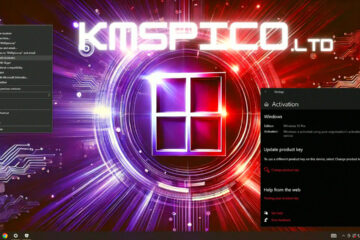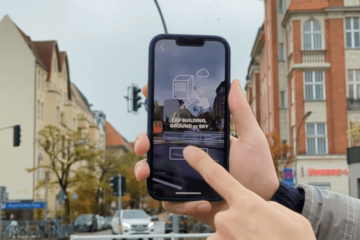Video content is more popular than ever, driving the demand for efficient and reliable video players across various platforms. Android, being one of the most widely used mobile operating systems, offers a diverse array of tools for developers to create high-performing video players. When paired with the power of cloud storage solutions like Amazon S3, the possibilities become even more expansive. In this blog, we’ll explore how to build a robust Android video player with seamless integration of S3 video content, ensuring a smooth and efficient user experience.
Understanding the Basics: Android Video Player
An Android video player is a core component of many mobile applications, especially those centered around media consumption. Android provides a flexible framework for building video players, with options ranging from basic implementations using the VideoView class to more advanced custom players leveraging ExoPlayer.
Basic Implementation with VideoView
The VideoView class in Android offers a simple way to integrate video playback into your application. It supports various media formats and can be easily set up with just a few lines of code:
VideoView videoView = findViewById(R.id.videoView);
videoView.setVideoURI(Uri.parse(“your_video_url_here”));
videoView.start();
While VideoView is a good starting point, it’s limited in terms of customization and advanced features. For more sophisticated needs, such as adaptive streaming, custom UI, or DRM support, ExoPlayer is the go-to choice.
Advanced Implementation with ExoPlayer
ExoPlayer is an open-source library from Google, designed to offer greater control over video playback. It supports a wide range of formats, adaptive streaming, and integrates well with other Android components. Here’s a basic setup:
SimpleExoPlayer player = new SimpleExoPlayer.Builder(context).build();
PlayerView playerView = findViewById(R.id.playerView);
playerView.setPlayer(player);
MediaItem mediaItem = MediaItem.fromUri(“your_video_url_here”);
player.setMediaItem(mediaItem);
player.prepare();
player.play();
With ExoPlayer, developers can easily manage buffering, network conditions, and UI customization, making it a powerful tool for any Android video player.
Integrating S3 Video with Your Android Video Player
Amazon S3 (Simple Storage Service) is one of the most reliable and scalable cloud storage solutions available today. Integrating S3 video into your Android video player allows you to store and stream large volumes of video content efficiently, benefiting from S3’s global reach, security, and performance.
Uploading Videos to S3
Before integrating S3 video into your Android video player, you need to upload your videos to an S3 bucket. Amazon S3 provides a user-friendly web interface and API for uploading files. Here’s a basic guide to uploading videos to S3:
Create an S3 Bucket: Log into your AWS account, navigate to the S3 service, and create a new bucket.
Upload Videos: Use the S3 console or AWS CLI to upload your video files to the bucket. Ensure the files are set to public or authenticated access based on your requirements.
Get the Video URL: After uploading, you can retrieve the public URL or signed URL for each video, which you’ll use in your Android application.
Accessing S3 Video in Android
Once your videos are uploaded to S3, integrating them into your Android video player is straightforward. The key is to use the video URLs directly in your player setup. Whether you’re using VideoView or ExoPlayer, the process is similar:
// For VideoView
videoView.setVideoURI(Uri.parse(“https://your_s3_bucket_url/video.mp4”));
videoView.start();
// For ExoPlayer
MediaItem mediaItem = MediaItem.fromUri(“https://your_s3_bucket_url/video.mp4”);
player.setMediaItem(mediaItem);
player.prepare();
player.play();
Optimizing Streaming with S3 and CloudFront
To ensure a smooth video playback experience, especially for large or high-definition videos, consider integrating Amazon CloudFront with your S3 bucket. CloudFront is a content delivery network (CDN) that caches your video files across multiple global locations, reducing latency and improving load times.
With CloudFront, you can serve videos faster to users around the world, ensuring a consistent playback experience regardless of location. Additionally, CloudFront supports adaptive bitrate streaming, which adjusts the video quality based on the user’s internet speed, further enhancing the user experience.
Best Practices for S3 Video Integration
When integrating S3 video into your Android video player, there are several best practices to consider:
Secure Your Content: Use signed URLs or tokens to protect your videos from unauthorized access.
Monitor Performance: Utilize AWS CloudWatch to monitor the performance of your S3 and CloudFront services, ensuring your videos are delivered efficiently.
Optimize Video Encoding: Encode your videos in formats that are optimized for streaming, such as H.264 for video and AAC for audio, to reduce file size and improve playback quality.
Handle Errors Gracefully: Implement error handling in your video player to manage network interruptions or file access issues, providing users with clear feedback.
Conclusion
Building an Android video player with S3 video integration offers a powerful solution for delivering high-quality video content to users. By leveraging tools like ExoPlayer and Amazon S3, developers can create a scalable, reliable, and efficient video streaming experience on Android. Whether you’re building a media-rich app or simply adding video content to your existing app, this combination provides the flexibility and performance needed to meet today’s demanding user expectations.
Keep an eye for more news & updates on Gossips!




